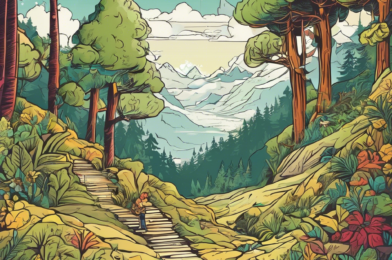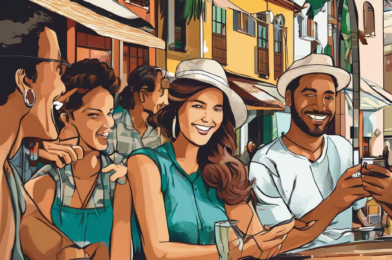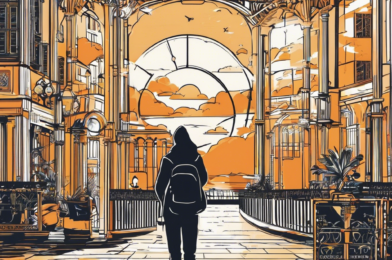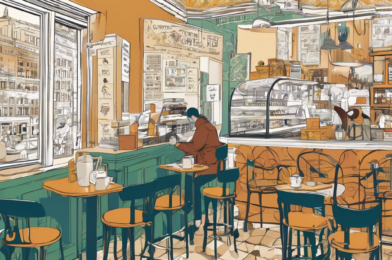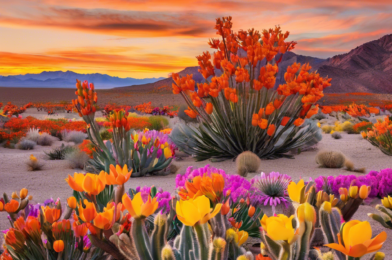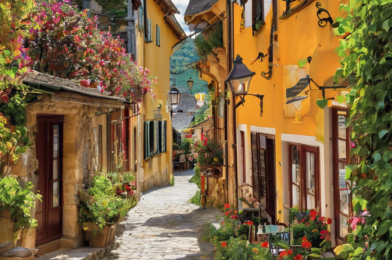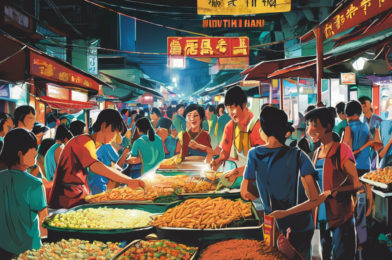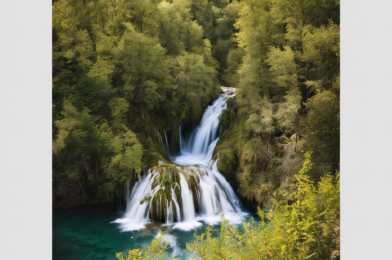The greatest travel stories rarely begin with “I followed the exact itinerary.” Instead, they start with “I took a wrong turn and stumbled upon…” Getting purposefully lost might seem contradictory, but it’s actually a skill that seasoned travelers practice to uncover those magical moments guidebooks never mention. Let’s explore how controlled wandering can transform your travels from predictable to unforgettable.
Why Planned Wandering Transforms Your Travel Experience
Standard tourism often feels like following a script. You visit the same landmarks as everyone else, take identical photos, and leave with similar stories. But what about those spaces between the highlights? That’s where authentic experiences hide.
Getting purposefully lost means:
- Discovering neighborhoods tourists rarely see
- Finding eateries where locals actually dine
- Encountering everyday rituals and customs
- Creating unique stories that become your travel legacy
- Experiencing genuine surprise and wonder
Research shows that our brains form stronger memories during novel experiences. When everything feels new and unexpected, your mind pays closer attention. Years later, these wandering days often become your most vivid travel memories.
The Difference Between Dangerously Lost and Purposefully Lost
Before we dive into techniques, let’s clarify an important distinction:
Dangerously lost means:
- No idea where you are
- No way to get back
- No communication options
- Growing anxiety and fear
- Potential safety risks
Purposefully lost means:
- General awareness of your location
- Multiple ways to return to familiar territory
- Communication methods available
- Sense of adventure and curiosity
- Basic safety measures in place
The art lies in finding that sweet spot where you’re exploring untrodden paths while maintaining necessary safeguards.
Planning Your Unplanned Adventure
The secret to successful wandering lies in preparation. This might sound counter-intuitive, but the best spontaneous discoveries happen when you’ve laid proper groundwork.
Safety First: Pre-Wandering Essentials
Before heading out, always:
- Tell someone your general plans, even if those plans include getting “lost”
- Ensure your phone is fully charged (bring a portable charger)
- Download offline maps of the area
- Learn a few key phrases in the local language
- Carry some local currency in small denominations
- Note the address of your accommodation
- Research any neighborhoods to avoid
- Wear comfortable shoes and weather-appropriate clothing
This preparation creates the security net that makes spontaneous exploration possible.
Choose the Right Starting Point
Pick a launching point that balances interest with safety:
- Start from a major landmark you can easily find again
- Begin in a busy area that gradually transitions to less touristy streets
- Select neighborhoods known for being pedestrian-friendly
- Look for areas with mixed use (residential, commercial, cultural)
- Consider timing—some neighborhoods transform between morning and evening
The perfect starting point offers easy entry into authentic local life while providing clear reference points.
Techniques for Artful Wandering
Getting purposefully lost isn’t random—it’s a craft with specific approaches.
The Left-Right-Left Method
One classic technique:
- Start walking from your chosen landmark
- Take the first left turn
- Then the next right turn
- Then another left
- Repeat this pattern
This simple algorithm ensures you won’t walk in circles while creating enough variation to discover unexpected places.
The “Follow Your Senses” Technique
Let your senses guide you:
- Follow enticing smells (fresh bread, coffee, street food)
- Walk toward interesting sounds (music, conversation, marketplace bustle)
- Pursue visual interests (colorful streets, interesting architecture, greenery)
- Track signs of local life (laundry lines, children playing, community gardens)
This approach attunes you to the subtle cues that often lead to authentic experiences.
The Local Transport Experiment
Public transportation offers structured spontaneity:
- Find a bus or tram stop near your accommodation
- Board a route that seems heavily used by locals (not tourist buses)
- Ride for 15-20 minutes into a residential area
- Disembark when you see something interesting
- Explore on foot, knowing you can retrace your steps via the same route
This method helps you quickly reach neighborhoods you might never see otherwise.
Safety Guardrails While Wandering
Freedom to explore requires boundaries. Establish these guardrails:
The Mental Breadcrumb Trail
As you wander, mentally note:
- Major streets you cross
- Distinctive buildings or landmarks
- Direction of the sun
- Changes in elevation or terrain
These mental markers help you backtrack if needed.
The Checkpoint System
Every 30 minutes of wandering, take a moment to:
- Check your location on a map
- Note the nearest main street or landmark
- Consider how you’d get back to familiar territory
- Assess your comfort level with continuing
This regular check-in prevents true disorientation.
The “Ask A Local” Approach
When in doubt, local knowledge trumps everything:
- Shop owners and baristas make excellent wayfinding resources
- Families with children or elderly people are typically reliable helpers
- Use simple language or translation apps
- Show maps rather than relying solely on verbal directions
Most locals take pride in helping visitors appreciate their neighborhood.
Hidden Gems Worth Getting Lost For
Different environments yield different discoveries. Here’s what to watch for:
In Urban Settings
Cities hide countless treasures off main streets:
- Family-run restaurants with no English menus
- Pocket parks and community gardens
- Street art in residential areas
- Local workshops and artisans
- Neighborhood markets and corner stores
- Community bulletin boards (even if you can’t read them, the posters reveal local priorities)
In Rural Areas
Countryside wandering reveals:
- Small-batch producers (cheese, wine, crafts)
- Viewpoints only locals know
- Family farms with homemade products
- Traditional crafts still practiced
- Seasonal celebrations and harvests
In Tourist Destinations
Even in heavily visited areas, you can find:
- Side streets parallel to main attractions
- Businesses catering to locals rather than visitors
- Service areas where workers gather
- Residential pockets between major sites
When to Abandon the Wandering
Knowing when to stop is as important as knowing how to start. End your wandering when:
- Daylight is fading (unless you’re in a well-lit urban area)
- Weather suddenly changes
- You feel uncomfortable or unwelcome
- Areas become noticeably less maintained or emptier
- Your intuition signals caution
Trust your instincts—they’re often picking up subtle cues your conscious mind hasn’t processed.
Tech Tools That Support Artful Wandering
Technology can enhance rather than detract from spontaneous discovery:
- GPS breadcrumb apps track your path for easy retracing
- Offline neighborhood guides provide context
- Translation apps facilitate interaction
- Photo mapping automatically tags locations
- Safety check-in services notify contacts if you don’t check in
The key is using tech as a safety net rather than a constant guide.
Stories Born From Getting Purposefully Lost
The proof lies in the experiences:
A traveler in Kyoto ventured away from the famous temples and found an elderly craftsman making traditional umbrellas. Through gestures and broken language, they received an impromptu demonstration that became the highlight of their Japan trip.
Another wanderer in Lisbon followed the sound of fado music down residential streets and was invited into a family gathering, where locals shared food and taught traditional dances long into the night.
Your First Purposeful Wandering: A Starter Plan
Ready to try it? Here’s a beginner-friendly approach:
- Select a safe, walkable neighborhood known for local character
- Allocate 2-3 hours with no other plans
- Set three checkpoints to assess your comfort level
- Establish a clear turnaround time
- Bring a small notebook to record discoveries
- Challenge yourself to speak to at least one local
- Photograph details rather than just landmarks
Start small and build your confidence. Each successful venture encourages more adventurous exploration.
The Lasting Impact of Artful Wandering
Beyond the immediate adventure, purposeful wandering changes how you travel forever. You’ll develop:
- Greater confidence in unfamiliar settings
- Enhanced observational skills
- Deeper appreciation for everyday moments
- More meaningful connections with places and people
- Stories that stand apart from standard tourist experiences
The best souvenirs aren’t purchased—they’re discovered when you let yourself get just a little bit lost.
